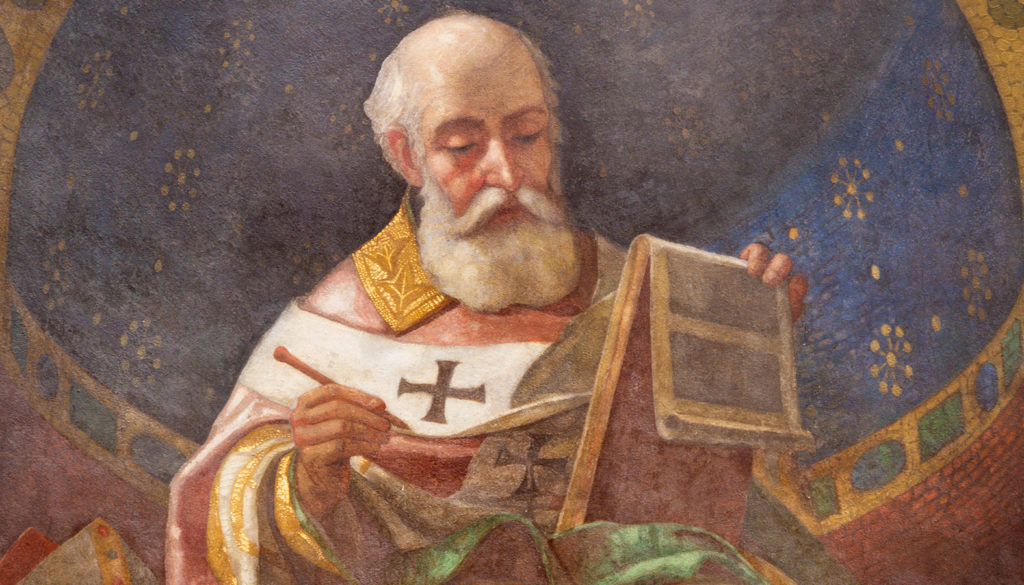St. Augustine, whose feast day is today, Aug. 28, is associated most prominently with Hippo Regius, the ancient name of the modern city of Annaba in Algeria. Yet well before his ancient bishopric, Augustine hailed from a now-long-vanished town located just a few dozen miles from that city — a place that still bears at least one landmark popularly associated with the venerated saint.
Augustine was born to St. Monica in the city of Thagaste, a Berber village located amid what historians say were dense growths of forest.
Like many smaller municipalities of antiquity, most of the details of the city have been lost to history. It was, however, evidently important enough to warrant a mention in Pliny the Elder’s “Natural History,” with the Roman historian identifying it as among the “free towns” in the region.
Rebecca Denova, a lecturer in religious studies at the University of Pittsburgh, said that prior to Augustine’s birth, the area was part of the Numidian kingdom that included the Berber tribes into which Augustine was born.
“The Romans then defeated Numidia and began colonizing the area for its grain and olive orchards,” Denova said. “At the same time, Roman businessmen settled in the area.”
Augustine, Denova said, absorbed this “romanization,” although “his communities also included the locals.”
Jim O’Donnell, the university librarian at Arizona State University and a noted Augustinian scholar, told CNA that Thagaste is “not a big historical place.” The city, he said, was likely founded in the second century, a few hundred years before Augustine’s birth.
The city was witness to a tumultuous theological period in the Church’s history. “[U]ntil 347, the city’s Christian church was controlled by the Donatist faction; at that point, an imperial commissioner with soldiers went through North Africa compelling churches to give up their Donatist allegiance and enter communion with the Caecilianist faction.”
The Donatists were a heretical sect of Christianity led by the breakaway bishop Donatus; the group asserted incorrectly that clergy must be in a state of grace in order to validly administer the sacraments. The scandalous doctrine was opposed by the Caecilianist faction — named after the Carthaginian bishop Caecilianus — and the latter group, O’Donnell noted, was ultimately dubbed “Catholic” by Augustine himself.
“This is important because Monica grew up there and would give birth to [Augustine] seven years after that ‘conversion’ — so she undoubtedly grew up among the Donatists,” he said.
Monica “obviously became as loyal to the new Church leadership,” O’Donnell noted, “and of course Augustine would become a leader in that faction.”
Augustine’s close friend Alypius would ultimately go on to become the bishop of Thagaste several years after both of the men converted to Christianity.
Seventeen centuries later, that bishopric still survives in titular form; the papal nuncio Ivo Scapolo currently serves as the titular archbishop of Thagaste.
Centuries of war, weathering, and regime changes have wiped clean most traces of Thagaste. The modern-day Algerian city of Souk Ahras now sits atop Augustine’s hometown.
The local Thagaste Bridge bears testament to the city’s ancient lineage, and nearby ancient ruins offer some evidence of Roman rule from centuries past.
Perhaps most poignantly, at the center of town sits a massive olive tree that, according to popular legend, Augustine himself used to sit under and meditate. Some traditions claim that Augustine himself planted the tree.
Pilgrims regularly visit this site for its connection to the great bishop, although the historical veracity of these claims is uncertain.
“[It’s] entirely improbable,” O’Donnell said, “but charming.”
St. Augustine is the patron saint of printers, theologians, beer brewers, and philosophers. He was made a doctor of the Church in 1298 by Pope Boniface VIII.

